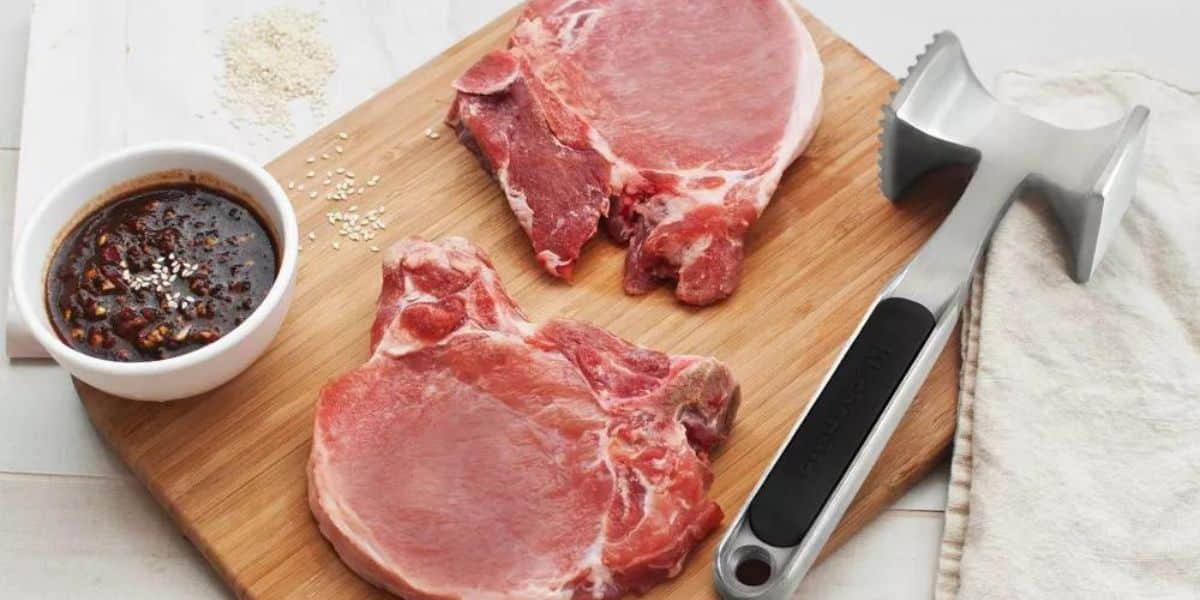Why It Is Important to Wait a Few Minutes After Adding Meat Tenderizer An Unmissable Guide
Written By James Morgan
When it comes to achieving the perfect barbecue, understanding the nuances of meat preparation is crucial. One frequently asked question among barbecue enthusiasts is why is it important to wait a few minutes after adding meat tenderizer? Lets dive into this topic to unearth the secrets that can help elevate your grilling game.

The Science Behind Meat Tenderizers
The main purpose of a meat tenderizer is to break down the muscle fibers in the meat, making it softer and easier to chew. Most commercial meat tenderizers contain active ingredients such as enzymes like papain (from papaya) or bromelain (from pineapple). These enzymes work by breaking down the protein structures in the meat. But why should you wait a few minutes after applying? This period is crucial for allowing the enzymes to penetrate deeply and perform their magic fully.

The Role of Enzyme Activity
How Enzymes Work
The enzymes in meat tenderizers work best when given time to interact with the meats protein structure. If you rush this process, the enzymes wont have enough time to soften the meat adequately. Waiting not only helps in achieving a better texture but also enhances the overall flavor.
Impact of Immediate Cooking
Cooking meat immediately after applying a tenderizer can paradoxically result in tough meat. Heat can deactivate the enzymes before theyve had a chance to do their job, leaving you with a dish thats far from tender.

Expert Barbecue Tips
The Optimal Waiting Time
So, how long should you wait? Most experts recommend letting the meat rest for at least 1530 minutes after applying the tenderizer. This window allows the enzymes to break down the proteins effectively.
Signs That the Tenderizer Has Worked
How can you tell if its time to start cooking? One way is to check the meat for changes in texture. It should feel visibly softer to the touch. Additionally, some meat may show a slightly lighter color where the tenderizer has been applied.

The Importance of Balance
While waiting is essential for effectiveness, extending the waiting period for too long can cause the meat to become mushy. Its crucial to find a balance that retains the meats structure while achieving the desired tenderness.
Common Mistakes to Avoid
Over-tenderizing
One common error is over-tenderizing the meat. Like anything else, too much of a good thing can be bad. Overexposure to tenderizer can break down too much protein, leaving mushy meat.
Skipping the Resting Period
As tempting as it might be to proceed with cooking immediately, skipping this crucial step can make a significant difference in the final texture and taste of your dish.
Applying Meat Tenderizer Correctly
For those unfamiliar with the process, heres a simple guide:
- Sprinkle the tenderizer evenly over both sides of the meat.
- Use a fork to pierce the meat lightly, allowing better penetration of the tenderizer.
- Wait for the recommended 1530 minutes before cooking.
For more details on application, see McCormicks Guide.
Best Practices for Specific Types of Meat
Beef
Beef generally responds very well to tenderizers. Ribeye, flank, and brisket are excellent cuts for this technique. Just ensure to follow the recommended waiting time to get it just right.
Chicken
While not always necessary for chicken, a light sprinkle of tenderizer can help enhance its texture, especially for thicker cuts like chicken breasts. However, focus on not overdoing since chicken is already relatively tender.
For tips on using meat tenderizer for pork chops, visit How to Use Meat Tenderizer on Pork Chops.
Pork
Pork benefits significantly from a good tenderizing process. Pork chops and shoulder cuts are particularly well-suited for this method. Explore Why Is Meat Tenderizer So Salty to understand more about using tenderizers on pork.
Real-Life Testimonials
Barbecue Enthusiasts Speak Out
I used to rush my grilling, but after understanding why its important to wait a few minutes after adding a meat tenderizer, my barbecue results have been transformative! John, Texas
The difference is like night and day. Taking that extra time has made my meat dishes go from good to remarkable! Sarah, Georgia
The Science Behind the Wait
Its scientifically proven that the penetration of enzymes works more effectively when given time. This period allows the enzymes to break down those protein structures thoroughly, achieving the desired tenderness. For a deeper insight into the scientific process, visit Leaf.tv's Guide.
Conclusion
Understanding why it is important to wait a few minutes after adding meat tenderizer can transform your barbecue endeavors. From achieving the perfect texture and flavor to avoiding common mistakes, this simple step is truly game-changing.
So the next time youre ready to fire up the grill, remember this crucial step and enjoy the delightful difference it makes!
As an Amazon Associate, I earn from qualifying purchases.
FAQs
How long should I wait after applying meat tenderizer?
You should wait for at least 1530 minutes.
Can waiting too long negatively affect the meat?
Yes, over-tenderizing can make the meat mushy.
Do different meats require different waiting times?
Generally, the 1530 minute rule works for all meats, but always monitor the texture to avoid over-tenderizing.



